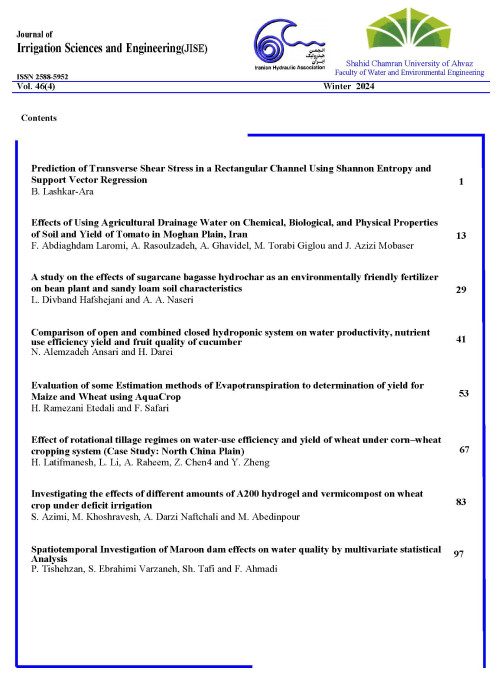The Combination of Mathematical and Stochastic Models to Improve the Results of Groundwater Models
Groundwater is one of the most important water supplies for domestic, industrial and agricultural use and it is the only reliable source of water in some areas. These resources have been exploited in many countries in the world. The various consequences of improper management and exploitation of groundwater have caused global concern, especially in developing countries. Due to the non-uniform distribution of precipitation and surface water resources and some advantages of groundwater such as low pollution, constant temperature etc., groundwater is at the center of attention as compared to surface water. Therefore, excessive exploitation of these resources will result in irreversible damage, such as declining groundwater level, discharge of wells and quants. To reduce the damage caused by the loss of aquifers, optimal management of these water resources is required. In order to achieve this goal, the latest scientific and engineering techniques should be used by water specialists. In this regard, the use of groundwater models and simulation techniques is one way to monitor, control and apply different management scenarios on groundwater resources. In groundwater models, it is possible to determine the response of aquifers in various stresses by defining different management scenarios. Therefore, the models can be used as a useful tool for identifying the hydrogeological system, choosing optimal management options and predicting the impact of climate parameters in the water management systems (Wang and Anderson, 1998; Chitsazan and Tavasuli, 1998). Precipitation, as one of the most important parameters in groundwater numerical models, plays a crucial role in water balance calculation. One of the weak points of mathematical models is the use of precipitation values in the calibration period to predict of the future. To solve the problem, time series models are considered as a solution. Among the specific characteristics of stochastic models is their ability to simulate climatic conditions. The most important time series model is the Autoregressive and Moving Average (ARIMA). The combined use of numerical and stochastic models can be effective to reduce forecast errors of numerical models.
- حق عضویت دریافتی صرف حمایت از نشریات عضو و نگهداری، تکمیل و توسعه مگیران میشود.
- پرداخت حق اشتراک و دانلود مقالات اجازه بازنشر آن در سایر رسانههای چاپی و دیجیتال را به کاربر نمیدهد.



